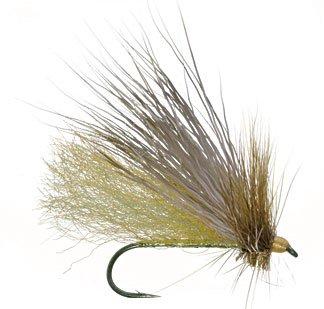
On The Fly
"Fly tying is a school from which we never graduate"
TYING NEWS
The Southern Oregon Fly Tiers invite you to attend their next meeting, Tuesday, June 9, 2009, 6:30 p.m. at the Madrone Hill Mobile Home Park community building near Gold Hill. Tiers need not be experienced, and those with all levels of skill are welcome. Participants are asked to donate a fly to the free raffle held at the end of the meeting. Each meeting a member is encouraged to demonstrate a new or different skill, from simple to difficult. For more information, call Dan Kellogg at 773-4724. DIRECTIONS: Take Gold Hill Exit #40, off of I-5 and go west, toward Jacksonville, 1.3 miles, until you reach the brick entrance way to the Madrone Hill Mobile Home Park on the right. You’ll pass a golf course parking lot on your left shortly after leaving the freeway. After you turn right into the mobile home park, proceed to the community building which is located about 100 yards ahead on the left. The address is 8401 Old Stage Rd. Please park your vehicle on the bare dirt in the parking lot to avoid the wooden septic covers in the grass.
 PATTERN OF THE MONTH - Clark's Stonefly
PATTERN OF THE MONTH - Clark's Stonefly
Hook: Daiichi 1280 or equivalent, 2X long dry fly, size 8-10 hook.
Thread: Orange 6/0.
Body: Gold flat tinsel.
Underwing: Rust and gold poly yarn, combed to blend colors.
Wing: Deer or elk hair.
Hackle: Brown saddle.
Head: Tying thread.
Tying Instructions:
1) Mash the hook barb, put the hook into your vise, start the thread behind the eye and lay down a thread
base on the shank to just above the barb of the hook. Spiral the thread forward to the 2/3 point on the
shank (1/3 back from the eye).
2) Tie in a length of tinsel at the 2/3 point by securing it from the top of the shank back to the position
above the barb. Then spiral the thread forward to the 2/3 position. Wind the tinsel forward in slightly
overlapping turns. Tie off the tinsel and trim excess.
3) Tie in the combed and blended poly yarn atop the hook at the front of the body. The back end of the yarn
should not extend more than ¼ inch past the bend of the hook. Trim the tag end of the poly yarn at the
front.
4) Firmly select a bundle of deer or elk hair from the hide at the base of the fibers. Do not stack the
hair. Place the hair wing over the poly yarn with the tips of the wing extending 1/4 inch beyond the end
of the yarn. Secure the wing in place with thread wraps then trim the butts down to a taper. Cover the
tapered butts with thread wraps to form a smooth base for the hackle.
5) Select a brown hackle feather sized to the hook and tie it in at the front of the wing. Wind the hackle
feather forward three or four turns. Tie off and trim.
6) Form a neat tapered thread head. Whip-finish the thread and apply cement.
7) Cut a V-notch at the bottom of the hackle to give a lower profile when the fly sits on the water.
After you finish tying a few dozen of last month's Stimulator flies, you should start on
this month's pattern. That's because the golden stonefly hatch happens right at the end of the salmonfly
hatch. At that time you will need them both in your fly box. Clark's Stonefly was developed by Lee Clark, a
long time Oregon Fly tier, in the 1980s when most stonefly patterns were being tied heavier and more dense.
That's when Lee made his imitation lighter. It floats like a feather and works when nothing else will. The
hook shank is camouflaged with flat tinsel in the surface film. The poly fibers trap air between them and
float like a strike indicator, and additional floatation is gained by the dense deer or elk hair collar
hackle. Clark's Stonefly has always worked best when insects are very active and abundant on the water.
This pattern combines its effectiveness with the ease of tying, unmatched by other
patterns. It requires only a basic knowledge of fly tying to produce a quality fly that works. It should be
fished like most standard dry fly patterns, quartering upstream with a long and drag-free float.
TYING TIPS
The only advice or tip I can give you on tying this pattern is about securing the hair
wing. If you use thread wraps that are too tight at first, the wing will flare and spread into an unruly
mess, looking nothing like a stonefly natural. The trick is to keep a death grip on the hair bunch while
wrapping the first few turns of thread with lighter tension. Tighter, securing wraps, must be applied
forward of the first few wraps to prevent the flaring. Changing the underwing to orange will create a very
effective salmonfly pattern if the Stimulator quits working. So tie some up, give them a test flight, and
let me know how you do.
Tie One On,
Dan Kellogg (you can contact me at FLYGUY@EZNORTHWEST.COM)